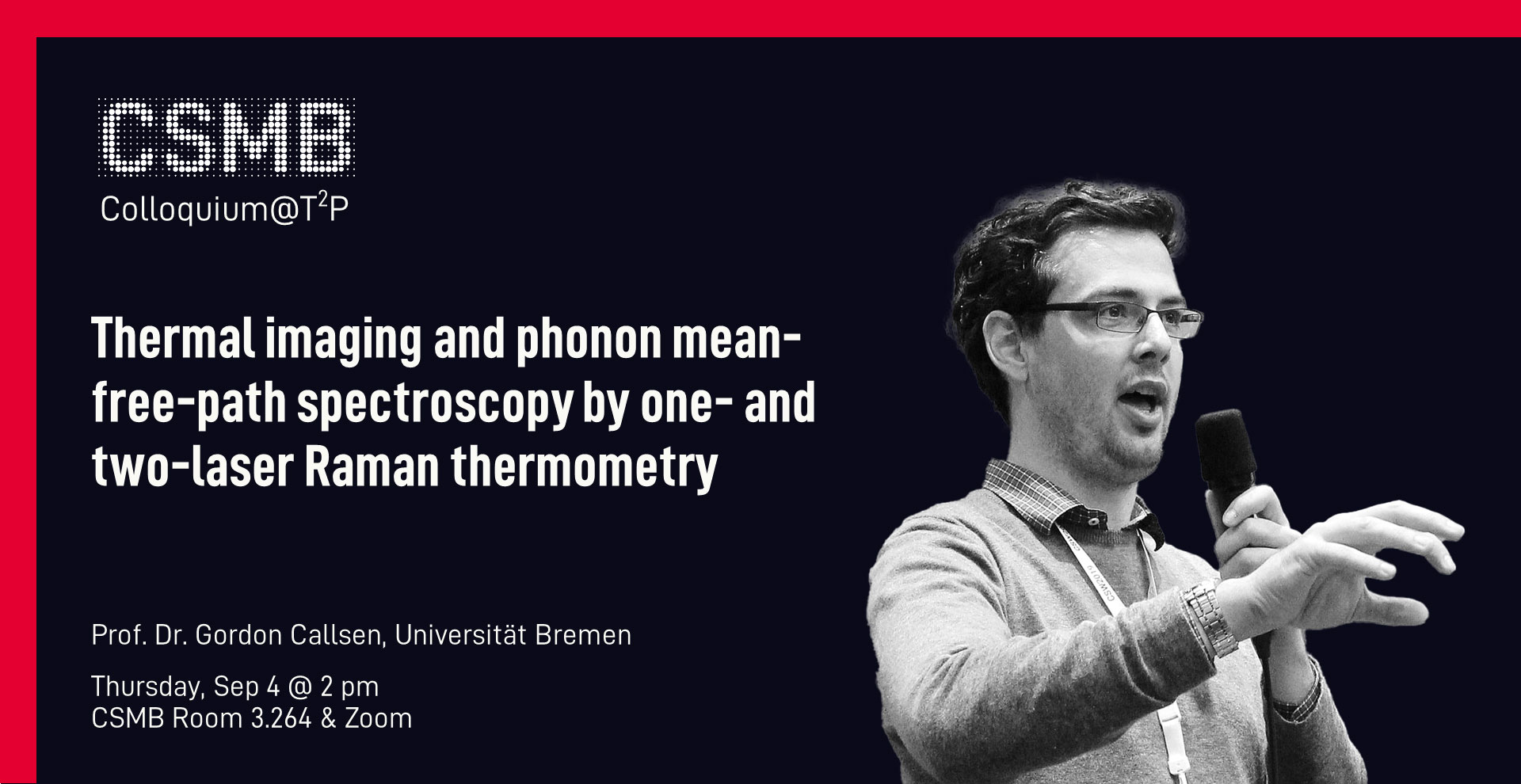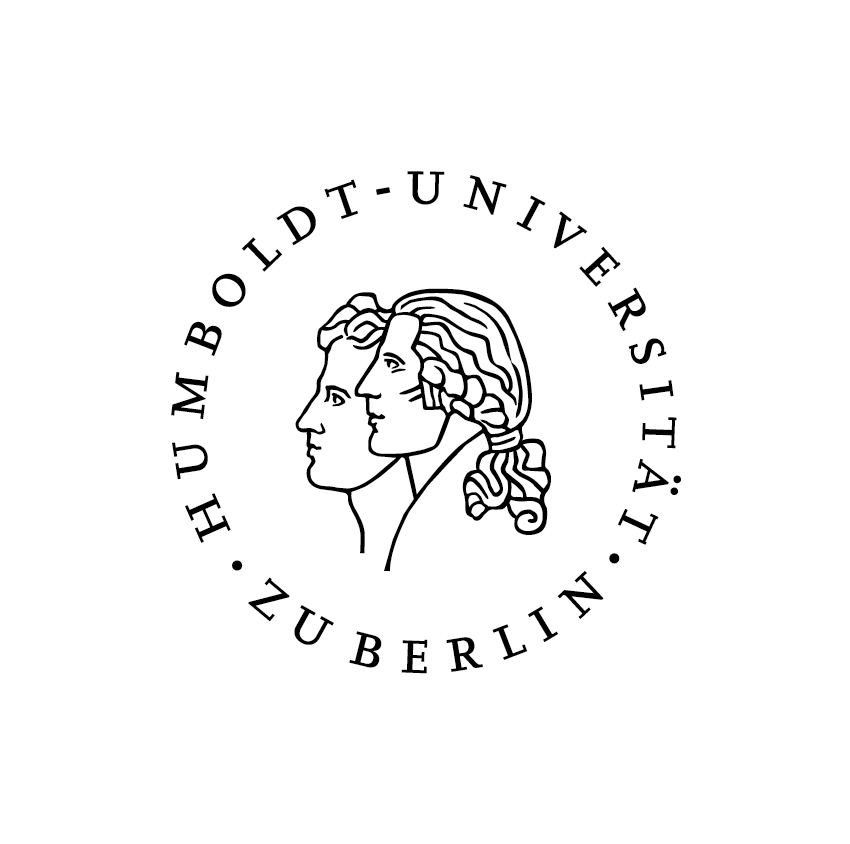
Thermal imaging and phonon mean-free-path spectroscopy by one- and two-laser Raman thermometry
Join us at the next Colloquium@T2P on
Thermal imaging and phonon mean-free-path spectroscopy by one- and two-laser Raman thermometry
Gordon Callsen
Institut für Festkörperphysik, Universität Bremen, Otto-Hahn-Allee 1, 28359 Bremen, Germany
Email: gcallsen@uni-bremen.de
The talk will also be broadcast via Zoom:
https://hu-berlin.zoom-x.de/j/64096785879?pwd=CZwWrHDXOg2SSsnESnvwmyXa5GQG6d.1
Abstract:
The race towards ever smaller structures in the fields of photonics and electronics demands novel pathways for heat dissipation [1]. Poor thermal management of semiconductor micro- and nano-structures limits their lifetime and performance, which should be avoided due to their energy and resource-intense fabrication [2]. Ideally, any smart thermal management should directly start at the heat source with often just sub-micrometer size.
In most semiconductor materials, the transport of thermal energy is dominated by phonons, while the corresponding contribution of electrons is negligible. However, the propagation of such phonons represents one of the most challenging to describe transport phenomena in solid-state physics, which is caused by complicated dispersion relations, numerous scattering processes, and their anharmonic nature. In recent years, an increasing number of publications reported on ballistic phonon propagation in, e.g, SiC and GaN [3] at 295 K and beyond. Here, phonons with long mean-free-paths lph on the order of micrometers still contribute significantly to the thermal conductivity κ. As a result, the heat diffusion equation (generalization of Fourier’s law) fails to describe any temperature distribution T(x,y,z) as soon as characteristic length scales lc (e.g., size of the heat source or structures) approach lph. It is a central question, how to improve thermal management, if already T(x,y,z) remains obscured.
The research of my group aims to counter this onerous problem by developing experimental tools, seeking to measure T(x,y,z) or even lph. By performing one-laser Raman thermometry (1LRT) on Si, we showed that this technique is sensitive to lph [4]. Therefore, we measured effective thermal conductivities κeff, while varying the radius of the laser-induced heat spot ωe as an example for lc. For our largest ωe (≈ 15 μm), κeff converges towards κbulk of Si. However, towards smaller ωe values (< 1 μm), we observe a pronounced increase of κeff compared to κbulk, which amounts up to a factor of 5.3 at 293 K and even 8.3 at 200 K. We assign this observation to ballistic phonon propagation, which enables phonon escape from the temperature probe volume of 1LRT.
To obtain more direct evidence for such ballistic phonon propagation, we imaged the in-plane temperature distribution T(x,y) of GaN membranes featuring lateral boundaries (semiconductor/vacuum interfaces). Therefore, we employed our recently developed, unique top-view two-laser Raman thermometry (2LRT) setup, which allows us to decouple the local heating from the temperature probing. In addition to the laser-induced heat spot, we observe a heating of boundaries, which we call “edge heating”. Phonons with large lph are optically generated in the heat spot and travel ballistically to the edges of our membranes. Here, these phonons deposit their thermal energy in a scattering process, leading to non-local heating. Edges are a natural part of any real-world-device and provide a promising perspective for future thermal management in close vicinity to the heat source.
References:
[1] M. M. Waldrop, More than Moore, Nature 530, 144 (2016). doi: 10.1038/530144a
[2] E. D. Williams, R. U. Ayres, and M. Heller, The 1.7 Kilogram Microchip: Energy and Material Use in the Production of Semiconductor Devices, Environ. Sci. Technol. 36, 5504 (2002). doi: 10.1021/es025643o
[3] M. Elhajhasan et al., Optical and thermal characterization of a group-III nitride semiconductor membrane by microphotoluminescence spectroscopy and Raman thermometry, Physical Review B 108, 235313 (2023). doi: 10.1103/PhysRevB.108.235313
[4] K. Dudde, M. Elhajhasan, G. Würsch, J. Themann, J. Lierath, G. Callsen, D. Paul, N. H. Protik, and G. Romano, Phonon mean free path spectroscopy by Raman thermometry, Materials Today Physics 101784 (2025). doi: 10.1016/j.mtphys.2025.101784

